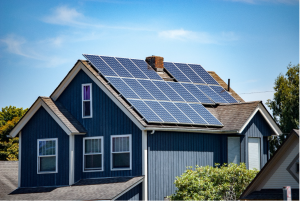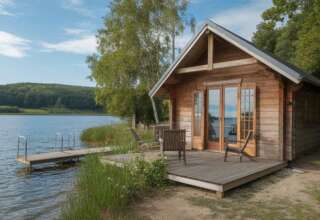It is fast becoming common to see homes using solar energy. This is because the world is gradually going green and everyone seems eager to enjoy the benefits that come with the use of renewable energy.
That said, if you are considering the installation of solar panels for your home, it is important to consider factors such as aesthetics, cost, and energy efficiency.
While all these are important factors, there is one factor that outweighs the relevance of every other factor and that is, the type of solar panel you choose for your home. The types of solar panels available in the market today have an impact on the cost of installation and production. They also affect the appearance of your roof panels.
To get the best out of renewable energy, you have to contract the services of installers that will use the right solar panel equipment to complete the installation for you. Going for the best saves you the stress of having to frequently contact a technician to fix issues with your panel.
Basically, there are three different types of solar installations for homes and we have outlined them in this article.
Types of Solar Panel Installations for Homes
The following are the three types of renewable energy installations that you may need in your home:
Grid-connected Solar Systems for Private Households
The grid-connected system is directly connected from the home down to the traditional power grid. This system allows homeowners to either obtain energy from the household electricity unit or the utility grid. It also allows for a seamless transition between the residential system and the grid.
The main advantage of this system is the ability to balance energy production and household power requirements. When grid-connected systems generate more energy than the home consumes, the excess can be bought by the utility company into the grid. This practice is known as net metering. If the system doesn’t generate enough energy, the home can draw power from the utility grid.
Grid-connected systems are the cheapest type of green energy system for private households because fewer components are required. If you are wondering how this system works, this video will show you how.
Grid-connected Solar System for Private Homes with Battery Backup
This solar power system is connected to the traditional grid and with a battery backup for the system. By adding a battery backup, the system balances energy generation and demand to prevent power outages.
The generation of energy under this system depends on the availability of sunlight. When there is sufficient sunlight, the production of energy can exceed demand. When this happens, the excess electricity can recharge the batteries that store electricity. If the system generates less electricity than is needed at home, the backup batteries will make up for the shortfall.
The system is also connected to the power grid. This allows homeowners to draw electricity from it when there is excess demand, or send power to it, in exchange for credit, when energy is produced in excess.
As flexible as this particular system appears, it also comes with some drawbacks. Over time, the battery efficiency drops due to frequent charging and discharging. They are also complex to install and this makes them more expensive.
Off-Grid Energy System
This type of system is completely separated from the traditional utility supply. In the absence of a link to the utility grid, batteries are important to make up for excess generation and demand.
In order to avoid blackout when the renewable energy system is insufficient and the battery is low, an electric generator comes with the system. Generators are used as a source of energy in case of prolonged and excess generation of unusual demand.
These are the three major types of renewable energy installations that you can get for your home, if you need assistance on how to maintain the panels, you can check here: https://www.wikihow.com/Maintain-a-Solar-Panel.
Conclusion
With each of these systems come slight variations in the design which affect their convenience and efficiency. To find out the system that best suits your needs, check your requirements with a solar installation specialist, But if you are a Texas citizen before transferring fully to solar we’d recommend comparing your electricity provider plan with other providers to see which one offers the best Texas electricity rates so maybe you’ll change your mind once finding more affordable plans.
A professional installer can guide you through the selection process while considering your power needs and which system is likely to meet your demands.











